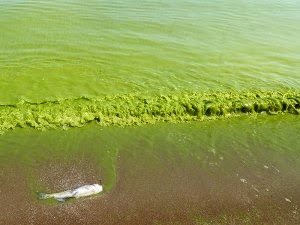August 7, 2014 at 1:00 am
THE GREAT LAKES
Toledo panic shows Great Lakes at risk
Gail Philbin
Toledo’s recent bout with poisoned drinking water should serve as a huge wake-up call to Michigan to take seriously the link between factory farming, water pollution and public health.
The story of how dangerous levels of a toxin ended up in the water supply of Ohio’s fourth-largest city is in large part the story of how we grow our food today and who decides what are considered good farming practices. The impetus for Toledo’s weekend water ban was microcystin, a toxin experts say can cause diarrhea, vomiting or abnormal liver function that probably formed in a recent algae bloom in Lake Erie. The soupy, pea-green growth in one of our Great Lakes is an increasingly common occurrence fed in part by phosphorus run-off from southern Michigan fields applied with commercial fertilizer or factory farm waste.
Why all the fertilizer and animal waste in our water? Because we eat lots of meat, dairy, poultry and eggs. The United States is the largest producer of corn in the world. Eighty percent of what we grow is consumed not by people but by domestic and overseas livestock, poultry and fish production, according to the U.S. Environmental Protection Agency. Vast monocultures of corn require large amounts of fertilizer to grow.
We also like cheap food and buy products that come from industrial-scale, concentrated livestock facilities, many of which have been constructed in the last decade in western Lake Erie watersheds that include southern Michigan.
Such operations are favored by federal Farm Bill subsidies that keep their product prices artificially low. This taxpayer-funded support often goes to help construct manure lagoons and other systems for handling the huge amount of waste factory farms generate. Even so, it can end up polluting nearby waterways, as shown in the 2013 report, Restoring the Balance to Michigan’s Farming Landscape. The current subsidy system rewards polluters, giving an unfair advantage over healthy, sustainable livestock farms.
More ...


